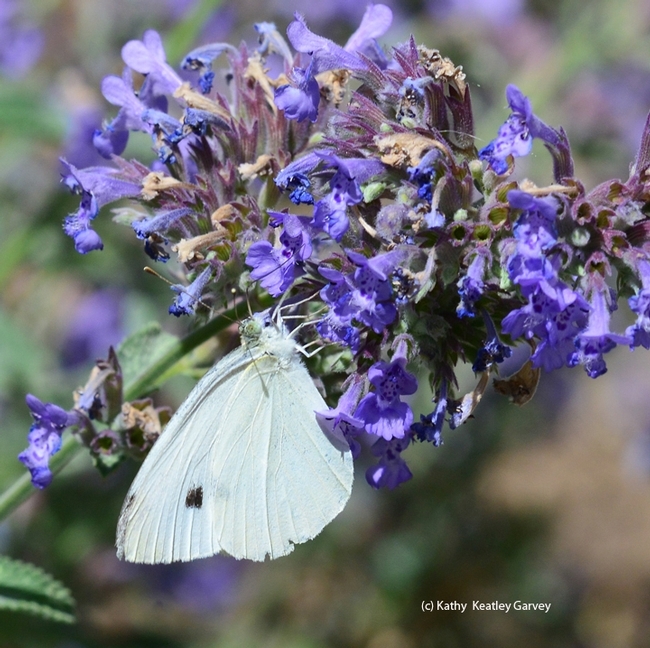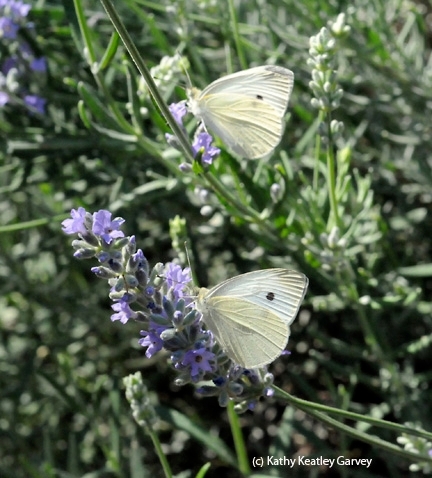- Author: Kathy Keatley Garvey
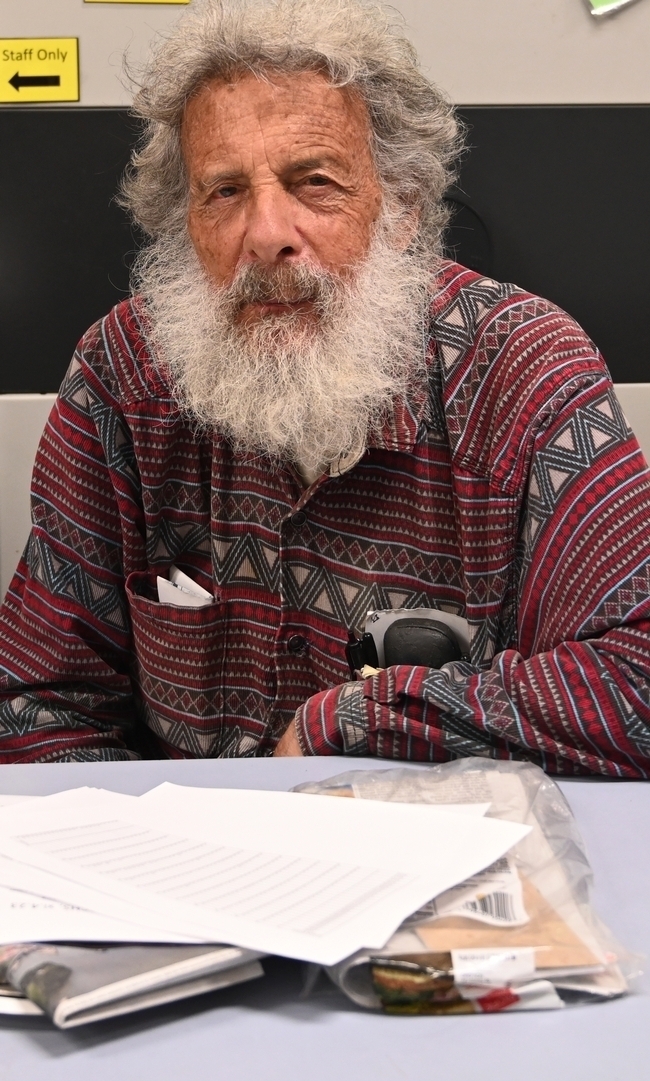
We have a winner in the annual Beer-for-a-Butterfly Contest, in which the first person to collect the first cabbage white butterfly of the year in the three-county area of Yolo, Sacramento and Solano, wins a beer.
The 2024 winner of the "Suds for a Bug" contest?
The repeat winner, UC Davis distinguished professor emeritus Art Shapiro. He has sponsored the annual contest since 1972 as part of his scientific research involving long-term studies of butterfly life cycles and climate change. He also participates in his own contest.
In its larval stage, the cabbage white butterfly, Pieris rapae, is a pest of cole crops, including cabbage, cauliflower and broccoli.
Shapiro did not actually collect the butterfly; he recorded it. But no person came forth with an eligible entry.
Shapiro spotted the cabbage white on Monday, Jan. 29 at 11:30 a.m. in West Sacramento, Yolo County, and saw the same one again at 11:40.
As he related in his posse email: “Went to West Sac bright and early, direct from breakfast and without a net. Light ground fog broke up by 9:30 a.m. and thereafter it was clear until around 2, when high, thin overcast moved in rapidly from the west. Before it clouded over, it hit 73F, with light and variable wind. Once the clouds moved in, although they were translucent, the temperature dropped quickly into the 60s. There are a few Brassica kaber (mustard) and a couple of dozen Raphanus (wild radish) in bloom, a tiny fraction of what was around last year at the end of January."
“Saw my first rapae of 2024, a male, at 11.20 a.m. and the same one again at 11.40. Then nothing until 12:20--another male, certainly a different one, 1.5 miles farther west. Nothing else seen, so 1(2) for the day.”
The emeritus professor said he learned that someone “may have gotten one yesterday (Jan. 28), location unknown, but no one came forth." He also received a report of one collected on Jan. 22 in Davis "which almost certainly hatched indoors so I'm not counting it. It was found in the person's apartment at 7 p.m., but never seen to come in from outdoors."
Shapiro, who has monitored butterfly populations in Central California since 1972, and maintains a research website at http://butterfly.ucdavis.edu/, says the point of the contest "is to get the earliest possible flight date for statistical purposes. The rules require that the animal be captured and brought in alive to be verified. That way no one can falsely claim to have seen one or misidentify something else as a cabbage white."
The contest rules include:
- It must be an adult (no caterpillars or pupae) and be captured outdoors.
- It must be brought in alive to the Bohart Museum of Entomology, located in Room 1124, Academic Surge Building, 455 Crocker Lane, UC Davis campus, during work hours, from 8 a.m. to noon, and from 1 to 5 p.m., Monday through Friday. It must include full data (exact time, date and location of the capture) and the contact information of the collector (address, phone number and/or e-mail.) Brennen Dyer will certify that it is alive and refrigerate it. (If it's collected on a weekend or holiday, it can be kept in the refrigerator for a few days--do not freeze it, Shapiro says.)
- Shapiro is the sole judge.
Brennen related no one brought a white cabbage butterfly to the Bohart Museum to compete in the contest.
P. rapae is emerging earlier and earlier as the regional climate has warmed, Shapiro says. "Since 1972, the first flight of the cabbage white butterfly has varied from Jan. 1 to Feb. 22, averaging about Jan. 20."
Shapiro has been defeated only four times and those were by UC Davis graduate students. Adam Porter won in 1983; Sherri Graves and Rick VanBuskirk each won in the late 1990s; and Jacob Montgomery in 2016. The first three were his own graduate students.
Who won in 2023? Shapiro spotted the first butterfly of 2023 at 11:22 a.m., in West Sacramento. He did not collect the butterfly but recorded it as the first of the year. No one came forth with a competitor.
Matthew Forister, the Foundation Professor, Trevor J. McMinn Endowed Research Professor in Biology at the University of Nevada, Reno, collaborates with Shapiro and annually creates a graph, using statistics from 1972 to the current year. "The long-term linear pattern continues, although recent years have been less steep (the year slope was -0.45 six years ago; is -0.34 now)," he related. Forister received his PhD in ecology from UC Davis in 2004, studying with Shapiro.
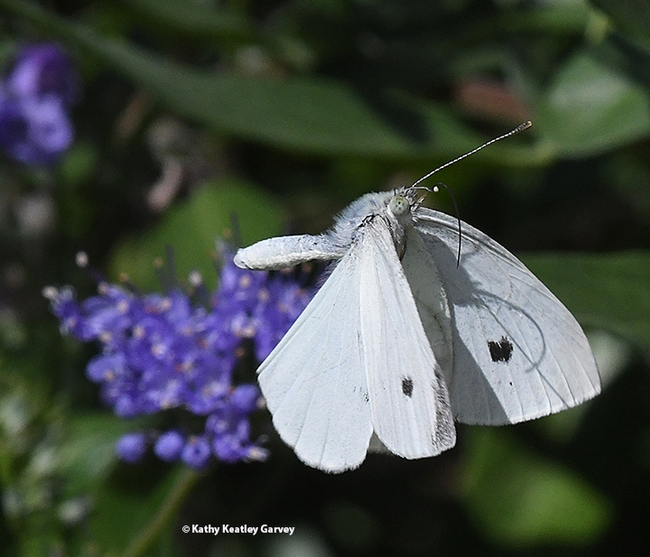
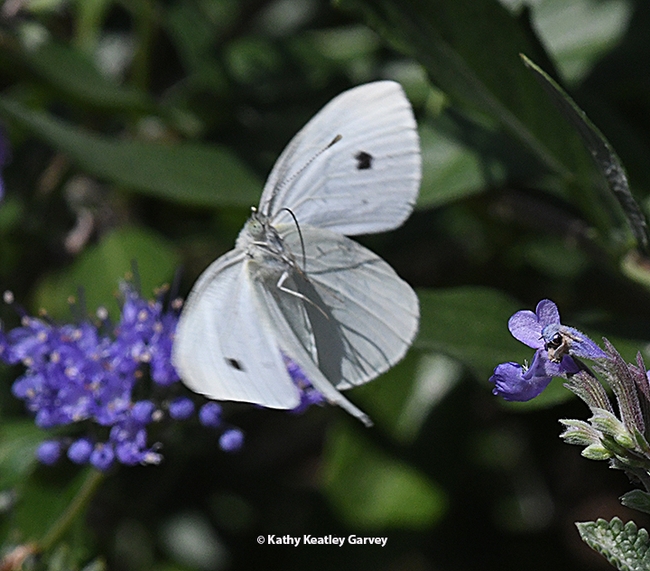
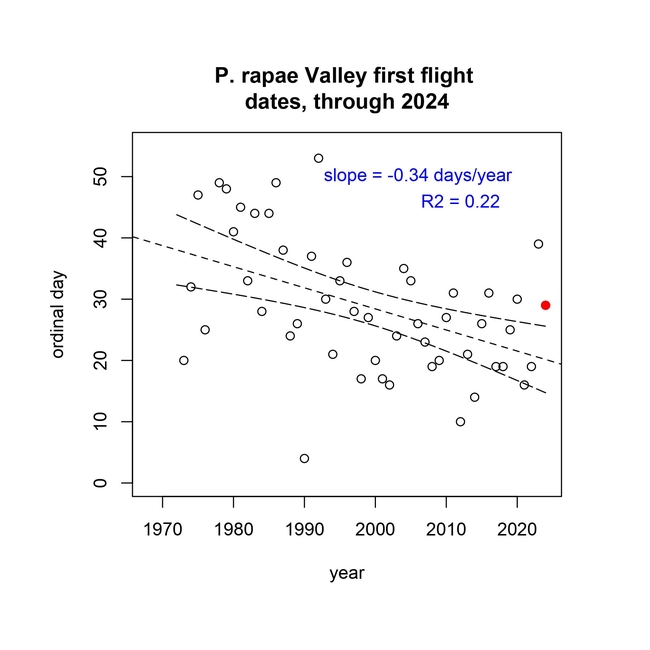
- Author: Kathy Keatley Garvey
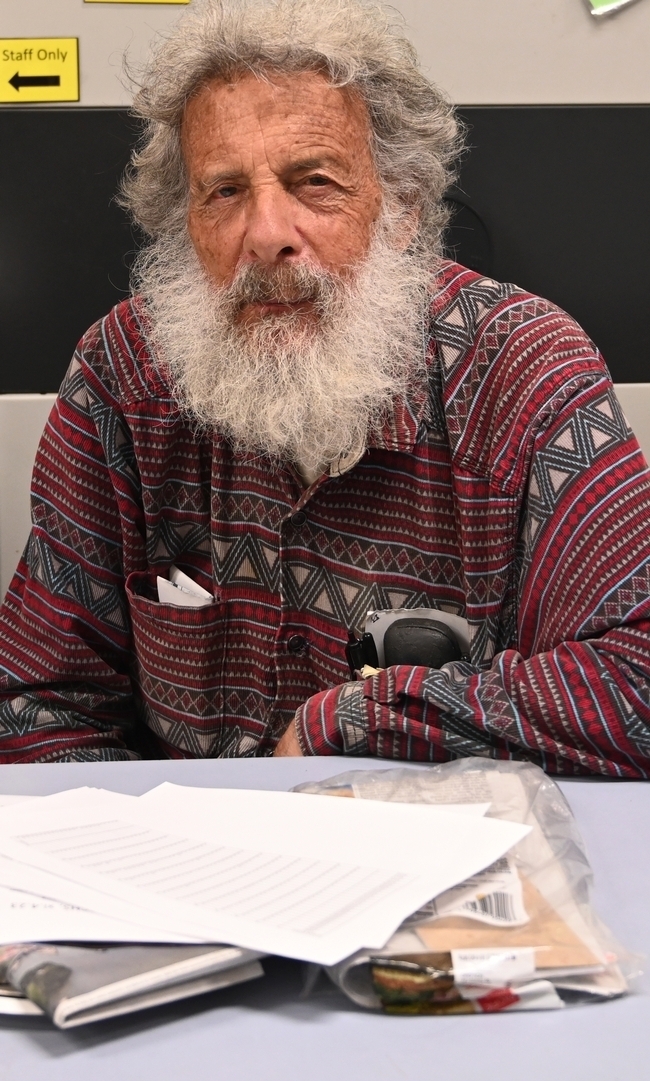
In the Beer-for-a-Butterfly contest, or "Suds for a Bug," if you collect the first live cabbage white butterfly (Pieris rapae) of the year anywhere in the three-county area of Yolo, Sacramento and Solano, you can trade it for a beer or its equivalent, compliments of the good professor.
Shapiro participates in his own contest and usually wins it. Today he monitored butterfly populations in Suisun (Solano County), but found no P. rapae.
No rapae today!
His records for the cabbage white of the year in Suisun show: Jan. 23, 2018; Jan. 25, 2019, Feb. 10, 2020 and Jan. 22, 2022. "No sample in '21, and late in '23 due to persistent rain, with first rapae not until March!" Shapiro noted. "Based on weather models, I am tentatively predicting the first rapae in the tri-county area for around Jan. 25-26."
Shapiro launched the contest in 1972 as part of his scientific research to determine the first flight of the year in the three-county area. His research involves long-term studies of butterfly life cycles and climate change.
P. rapae is emerging earlier and earlier as the regional climate has warmed, Shapiro says. "Since 1972, the first flight of the cabbage white butterfly has varied from Jan. 1 to Feb. 22, averaging about Jan. 20."
Shapiro, who has monitored butterfly populations in Central California since 1972, and maintains a research website at http://butterfly.ucdavis.edu/, says the point of the contest "is to get the earliest possible flight date for statistical purposes. The rules require that the animal be captured and brought in alive to be verified. That way no one can falsely claim to have seen one or misidentify something else as a cabbage white."
The contest rules include:
- It must be an adult (no caterpillars or pupae) and be captured outdoors.
- It must be brought in alive to the Bohart Museum of Entomology, located in Room 1124, Academic Surge Building, 455 Crocker Lane, UC Davis campus, during work hours, from 8 a.m. to noon, and from 1 to 5 p.m., Monday through Friday. It must include full data (exact time, date and location of the capture) and the contact information of the collector (address, phone number and/or e-mail.) Brennen Dyer will certify that it is alive and refrigerate it. (If it's collected on a weekend or holiday, it can be kept in the refrigerator for a few days--do not freeze it, Shapiro says.)
- Shapiro is the sole judge.
Shapiro has been defeated only four times and those were by UC Davis graduate students. Adam Porter won in 1983; Sherri Graves and Rick VanBuskirk each won in the late 1990s; and Jacob Montgomery in 2016. The first three were his own graduate students.
Who won in 2023? Shapiro spotted the first butterfly of 2023 at 11:22 a.m., in West Sacramento, Yolo County. He did not collect the butterfly but recorded it as the first of the year. No one came forth with any other.
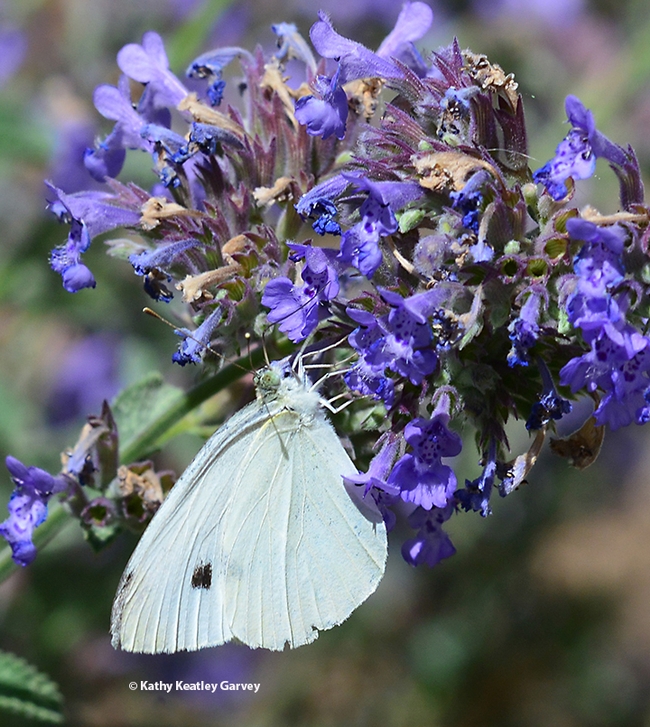
- Author: Kathy Keatley Garvey
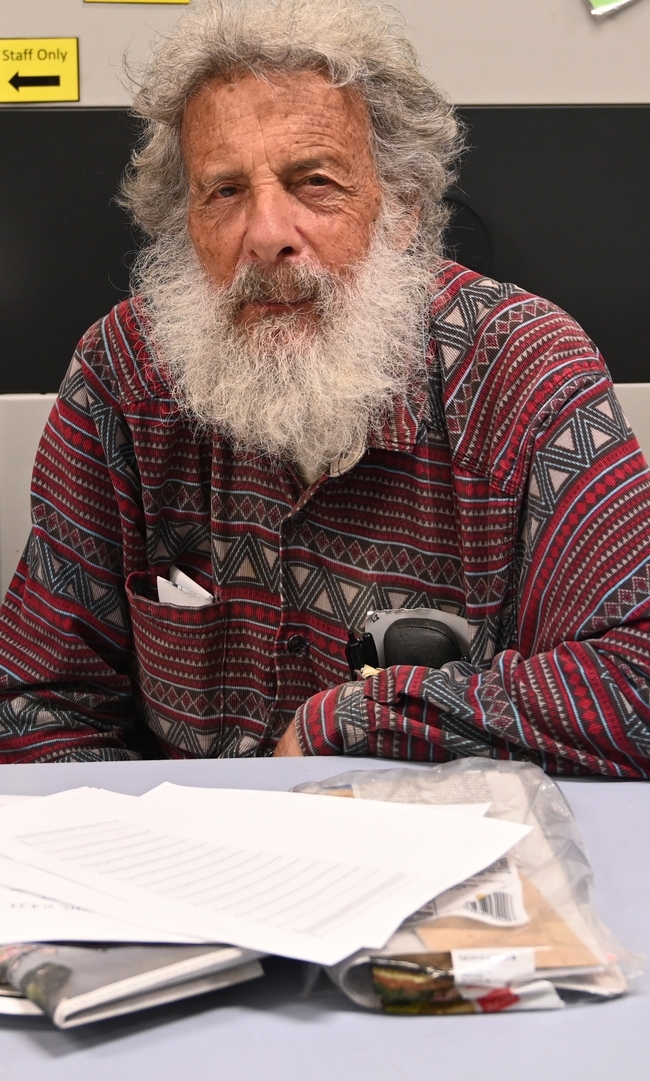
It's almost time for the Art Shapiro's annual "Beer-for-a-Butterfly" contest that he's sponsored since 1972. The person who finds the first-of-the-year cabbage white butterfly, Pieris rapae, in the three-county area of Yolo, Sacramento and Solano, wins a beer--or its equivalent.
And bragging rights!
Shapiro, UC Davis distinguished professor emeritus, Department of Evolution and Ecology, is retired, but not from his research and not from sponsoring the annual “Beer-for-a-Butterfly” contest.
Beginning Jan. 1, 2024, Shapiro will be collaborating with the Bohart Museum of Entomology, the "dropping off point," for the entries. Bohart curator and collections manager Brennen Dyer will be accepting the entries.
Shapiro launched the contest a half a century ago as part of his scientific research to determine the first flight of the year in the three-county area. His research involves long-term studies of butterfly life cycles and climate change.
Shapiro says P. rapae is emerging earlier and earlier as the regional climate has warmed. "Since 1972, the first flight of the cabbage white butterfly has varied from Jan. 1 to Feb. 22, averaging about Jan. 20."
Shapiro, who maintains a research website at http://butterfly.ucdavis.edu/, says the point of the contest "is to get the earliest possible flight date for statistical purposes. The rules require that the animal be captured and brought in alive to be verified. That way no one can falsely claim to have seen one or misidentify something else as a cabbage white."
The contest rules include:
- It must be an adult (no caterpillars or pupae) and be captured outdoors.
- It must be brought in alive to the Bohart Museum of Entomology, located in Room 1124, Academic Surge Building, 455 Crocker Lane, UC Davis campus, during work hours, from 8 a.m. to noon, and from 1 to 5 p.m., Monday through Friday. It must include full data (exact time, date and location of the capture) and the contact information of the collector (address, phone number and/or e-mail.) Brennen Dyer will certify that it is alive and refrigerate it. (If it's collected on a weekend or holiday, it can be kept in the refrigerator for a few days--do not freeze it, Shapiro says.)
- Shapiro is the sole judge.
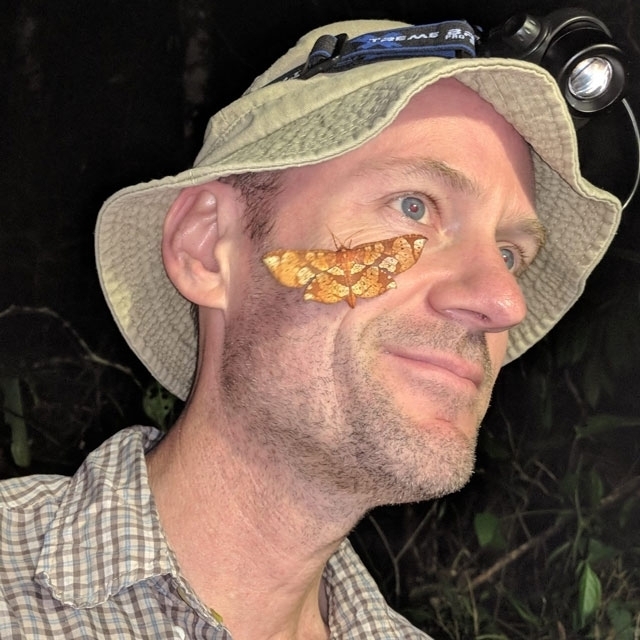
Feb 8 was "the 11th latest first rapae day since 1972,” he said, detailing the 10 later finds: Feb. 26, 1972 (“which is probably too late, since I hadn't yet learned where to look for them first!”); Feb. 22, 1992 (“I fully believe that one”); Feb. 18, 1978 and 1986; Feb. 17, 1979; Feb. 16, 1975; Feb. 14, 1981; Feb. 13, 1983 and 1985; and Feb. 10, 1980. “Note that most of these are from the '80s,” he said. “There has indeed been a trend to earlier emergence, though this year is an outlier!”
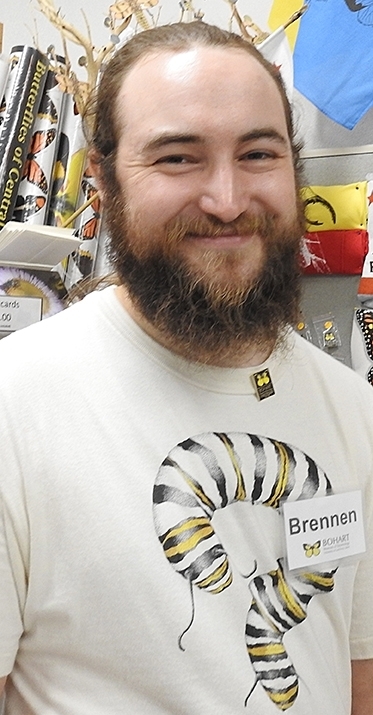
Shapiro, who monitors butterfly populations in the field for more than 200 days of the year, participates in his own contest. He has been defeated only four times and those were by UC Davis graduate students. Adam Porter won in 1983; Sherri Graves and Rick VanBuskirk each won in the late 1990s; and Jacob Montgomery in 2016. The first three were his own graduate students.
Shapiro nets many of the winners in mustard patches near railroad tracks in West Sacramento, Yolo County
Recent Beer-for-a-Butterfly Contest statistics:
- 2023: Art Shapiro recorded the first butterfly of the year at 11:22 a.m., Feb 8 in West Sacramento County, Yolo County. He did not collect the specimen and no one can forth with a winner.
- 2022: No official contest due to the COVID pandemic, but Shapiro recorded his first-of-the-year P. rapae at 1:25 p.m. on Jan. 19 in West Sacramento, Yolo County
- 2021: No official contest due to the COVID pandemic, but Shapiro collected his first-of-the-year at 1:55 p.m. Jan. 16 on the UC Davis campus, Yolo County
- 2020: Technically, no winner, as Shapiro did not collect the one he spotted in Winters, Yolo County at 11:16 a.m. on Jan. 30 at the Putah Creek Nature Park. "It flew back and forth across Putah Creek and then departed the area, flying out of reach above the trees," he noted. He waited around for 90 minutes to see if it would return. It did not.
- 2019: Shapiro collected the first cabbage white butterfly near the Suisun Yacht Club, Suisun City, Solano County, at 1:12 p.m., Friday, Jan. 25. "It was the earliest recorded in Suisun City in 47 seasons."
- 2018: Art Shapiro collected the winner in West Sacramento
- 2017: Jan. 19: Art Shapiro collected the winner on the UC Davis campus
- 2016: Jan. 16: Jacob Montgomery collected the winner in west Davis
- 2015: Jan. 26: Shapiro collected the winner in West Sacramento
- 2014: Jan. 14: Shapiro collected the winner in West Sacramento
- 2013: Jan. 21: Shapiro collected the winner in West Sacramento
- 2012: Jan. 8: Shapiro collected the winner in West Sacramento
- 2011: Jan. 31: Shapiro collected the winner in Suisun
- 2010: Jan. 27: Shapiro collected the winner in West Sacramento
A fellow of the American Association for the Advancement of Science, the Royal Entomological Society and the California Academy of Sciences, Shapiro is the author of A Field Guide to Butterflies of the San Francisco Bay and Sacramento Valley Regions, illustrated by Tim Manolis and published in 2007 by the University of California Press.
Collaborating with Shapiro on butterfly research projects is Foundation Professor Matthew Forister, the Trevor J. McMinn Endowed Research Professor in Biology, University of Nevada. Forister received his doctorate from UC Davis, studying with Shapiro, his major professor.
Pest of Cole Crops. As a caterpillar, the insect is a pest of cole crops such as cabbage. UC Statewide Integrated Pest Management Program (UC IPM) says the cabbageworm is active throughout the year in California. "Cabbageworm larvae chew large, irregular holes in leaves, bore into heads, and drop greenish brown fecal pellets that may contaminate the marketed product. Seedlings may be damaged, but most losses are due to damage to marketed parts of the plant," according to the UC IPM website.
The Bohart Museum of Entomology is directed by UC Davis distinguished professor Lynn Kimsey. Entomologist Jeff Smith curates the Lepidoptera collection, a global collection of some 500,000 moths and butterflies.
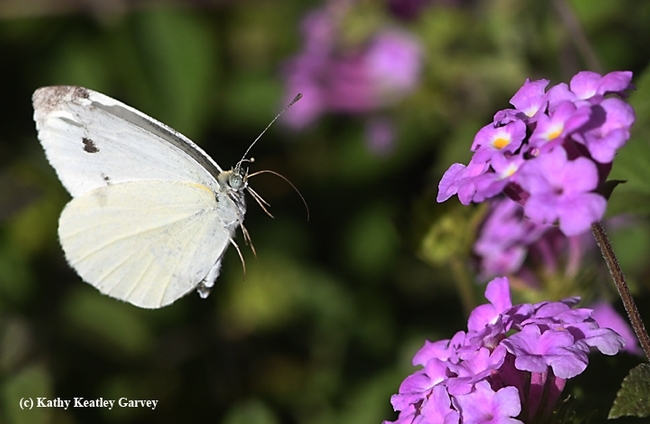
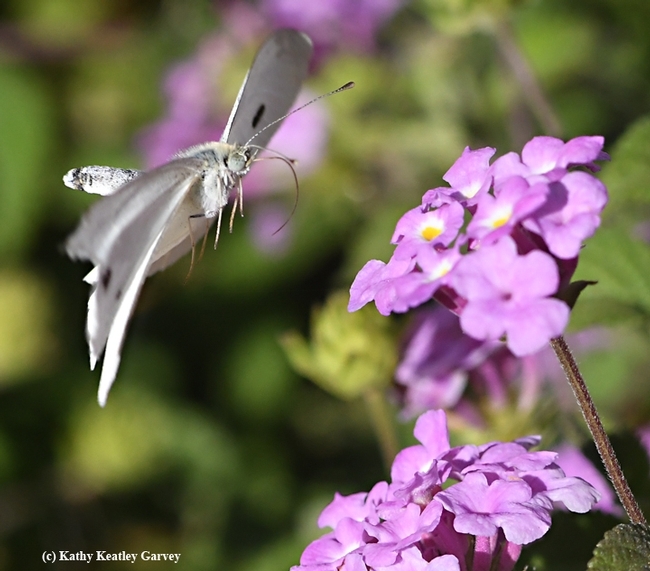
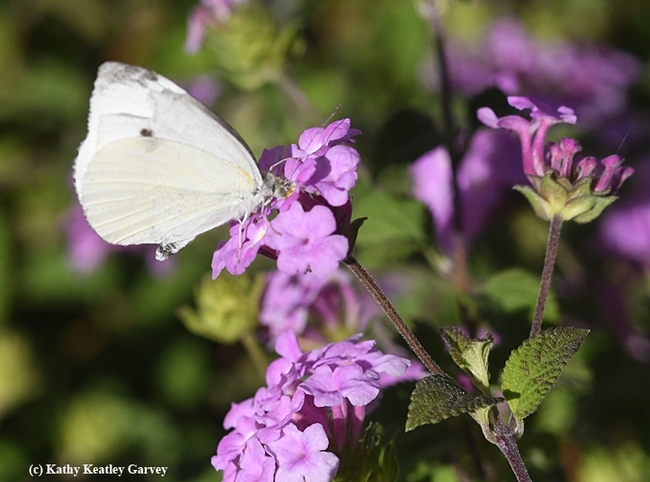
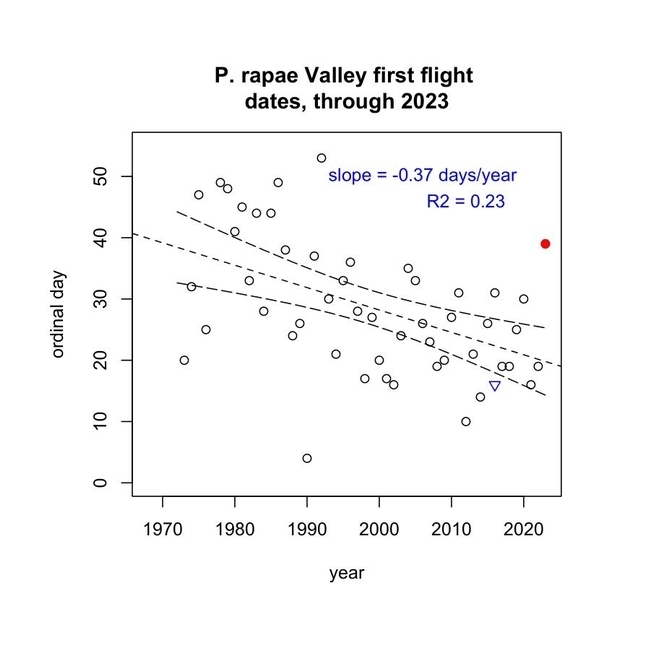
- Author: Kathy Keatley Garvey
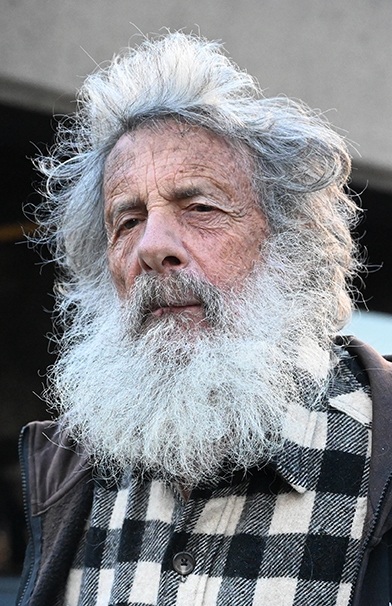
He participates in his annual "Beer for a Butterfly" contest that he's sponsored since 1972 as part of his scientific research to determine the butterfly's first flight of the year in the three-county area of Sacramento, Yolo and Solano. The rules: net the first butterfly and win a pitcher of beer or its equivalent. Suds for a bug.
Today, Feb. 8, proved to be a "bingo" day.
"I knew when I left the house at 10:10 this morning that today would be rapae day," he announced in an email with the subject line, Bingo!
"It was."
He spotted his first rapae of the year, a female, at 11:22 a.m. in West Sacramento, Yolo County. At 11:38, he saw a male. "Both were typical late winter phenotypes, quite different from what was flying in December," he noted. "My last in West Sac was Christmas Eve. So the rapae-less hiatus was 45 days, i.e. just over 6 weeks."
It was 64 degrees, clear, no wind.
"I did not get a specimen," Shapiro related. "Both of them were flying up near the railroad track at the top of the railroad embankment, where the ground is strewn with coarse gravel. That makes for a warm layer of air in full sun, but terrible footing. I am no longer so nimble or so self-confident as I used to be, and I never got a clean shot at either bug even though I got within about 6 feet of both."
"I could have stayed in that area and probably eventually would have caught one or both of them," Shapiro added. "I had to weigh that against covering the rest of the upland half of my site and possibly finding something else out. Remember that the butterfly-friendly window of time each day is still very short. I opted to keep moving, ultimately observing two atalanta (Vanessa atalanta, the red admiral) but nothing else. Malvella (mallow family) has not broken ground yet. Plenty of Erodium (family Geraniaceae) in bloom now, though.
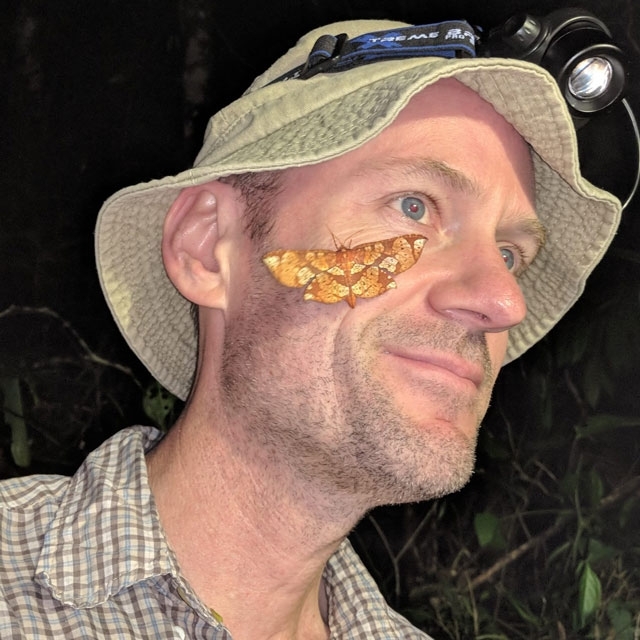
P. rapae inhabits vacant lots, fields and gardens where its host plants, weedy mustards, grow. In its caterpillar stage, it is a pest commonly called "cabbageworm" that chews on cole crops.
Shapiro, who is in the field 200 days of the year, has been defeated only four times and those were by UC Davis graduate students. Adam Porter won in 1983; Sherri Graves and Rick VanBuskirk each won in the late 1990s; and Jacob Montgomery in 2016. The first three were his own graduate students.
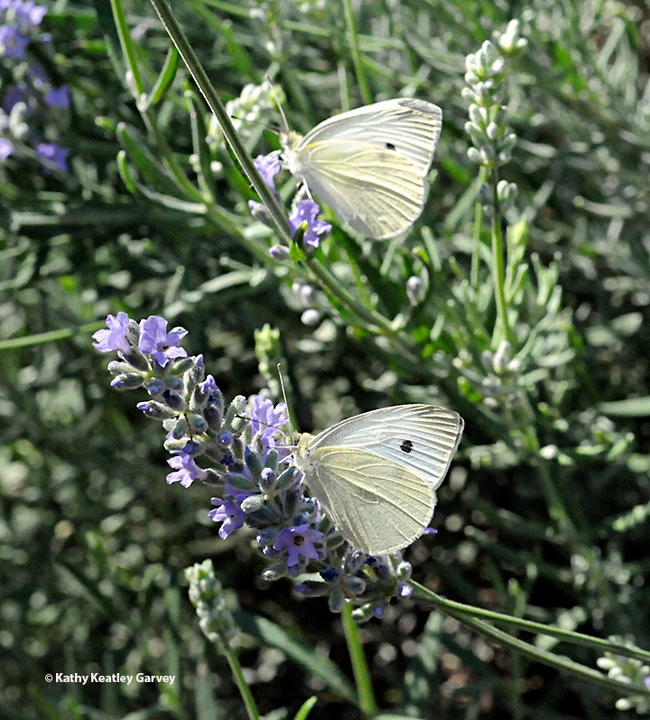
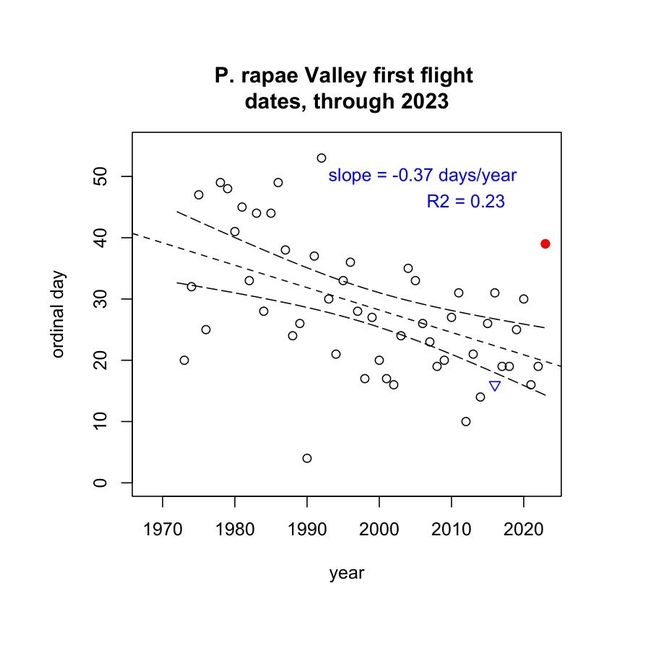
- Author: Kathy Keatley Garvey
Blame the rain. Blame the cold.
As of today, Jan. 26, no one has won Art Shapiro's "Beer-for-a-Butterfly Contest," aka Suds-for-a-Bug.
Not Art, not anyone.
Shapiro, a UC Davis distinguished professor of evolution and ecology, has sponsored the Beer-for-a-Butterfly Contest since 1972 in the three-county area of Sacramento, Yolo and Solano to determine the cabbage white butterfly's first flight of the year.
It's part of his long-term studies of butterfly life cycles and climate change. He's been researching butterfly populations of central California since 1972 and posts information on his website, Art's Butterfly World.
How does this contest work? He'll trade you a pitcher of beer or its equivalent if you collect the first cabbage white butterfly, Pieris rapae, of the year.
But he usually wins because he knows where to look.
Shapiro went looking for the bug today, which he described as "a perfect rapae day."
Any results? "Nope."
The contest rules include:
- It must be an adult (no caterpillars or pupae) and be captured outdoors.
- It must be brought in alive to the Department of Evolution and Ecology office, 2320 Storer Hall, UC Davis, during work hours, 8 a.m. to 5 p.m., Monday through Friday, with the full data (exact time, date and location of the capture) and the contact information of the collector (address, phone number and/or e-mail.) The receptionist will certify that it is alive and refrigerate it. (If it's collected on a weekend or holiday, it can be kept in the refrigerator for a few days--do not freeze it.)
- Shapiro is the sole judge.
P. rapae inhabits vacant lots, fields and gardens where its host plants, weedy mustards, grow. The male is white. The female is often slightly buffy; the "underside of the hindwing and apex of the forewing may be distinctly yellow and normally have a gray cast,” Shapiro said. “The black dots and apical spot on the upperside tend to be faint or even to disappear really early in the season.” In its caterpillar stage, it is a pest commonly called "cabbageworm."
Shapiro, who is in the field 200 days of the year, has been defeated only four times and those were by UC Davis graduate students. Adam Porter won in 1983; Sherri Graves and Rick VanBuskirk each won in the late 1990s; and Jacob Montgomery in 2016. The first three were his own graduate students.
The search is on...Rumor has it that Ria de Grassi of Davis, who won the third annual Robbin Thorp First-Bumble-Bee-of-the-Year Contest by photographing a black-tailed bumble bee, Bombus melanopygus, in her yard, may try her hand (and her net) at collecting one. (See Bug Squad blog)
Shapiro loves the competition, all of it. "Let the best person win!"
Anyone?
